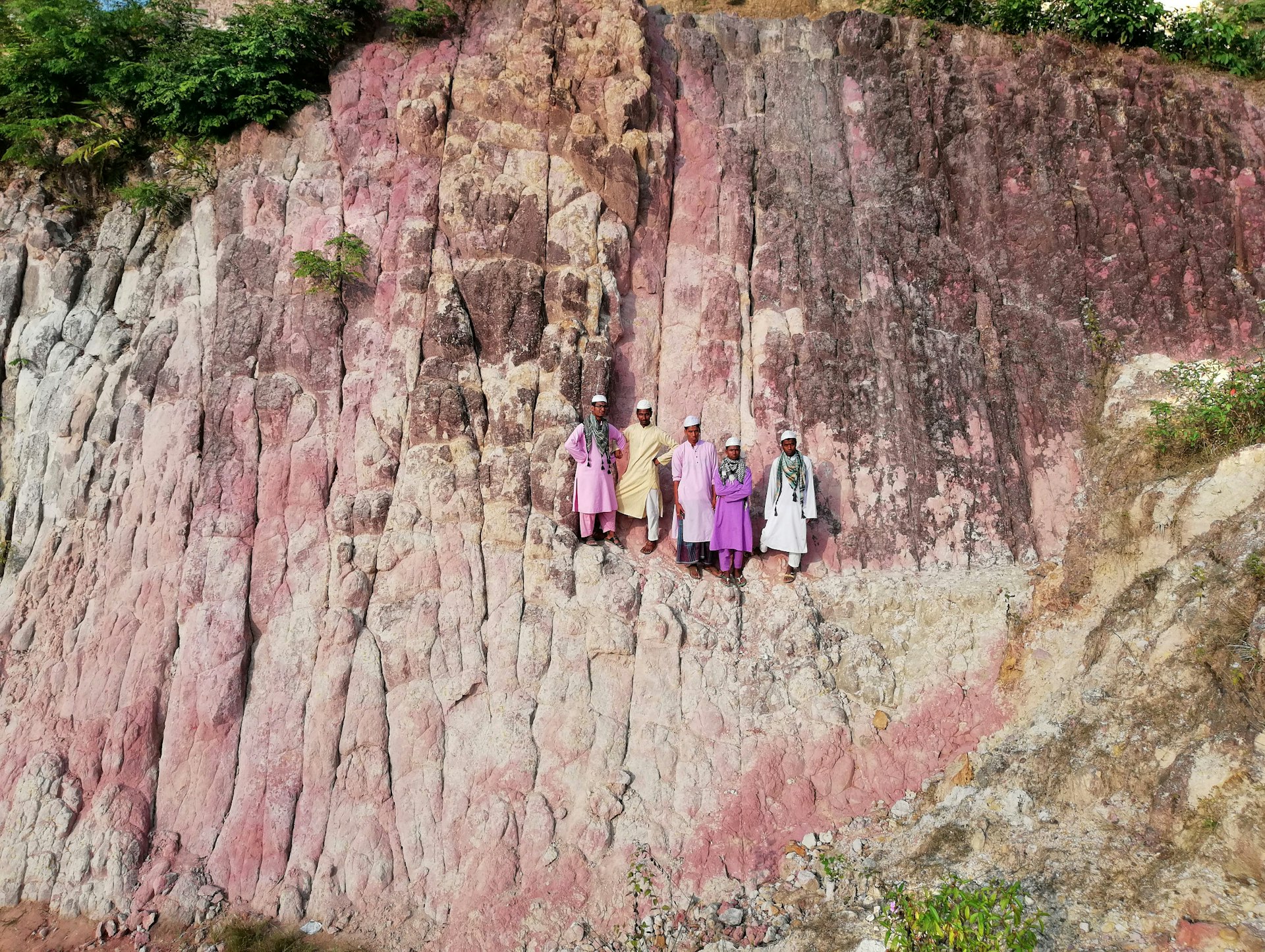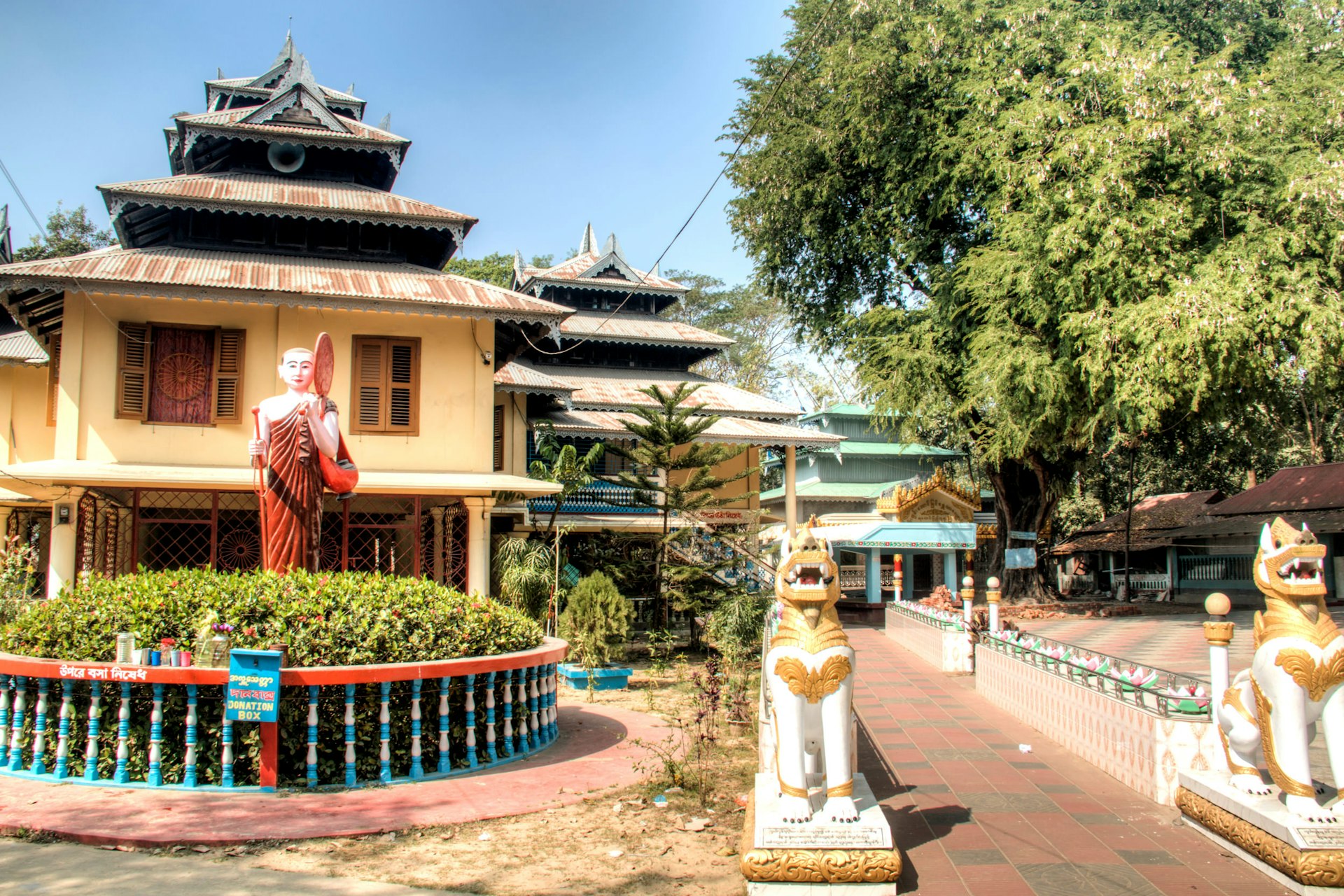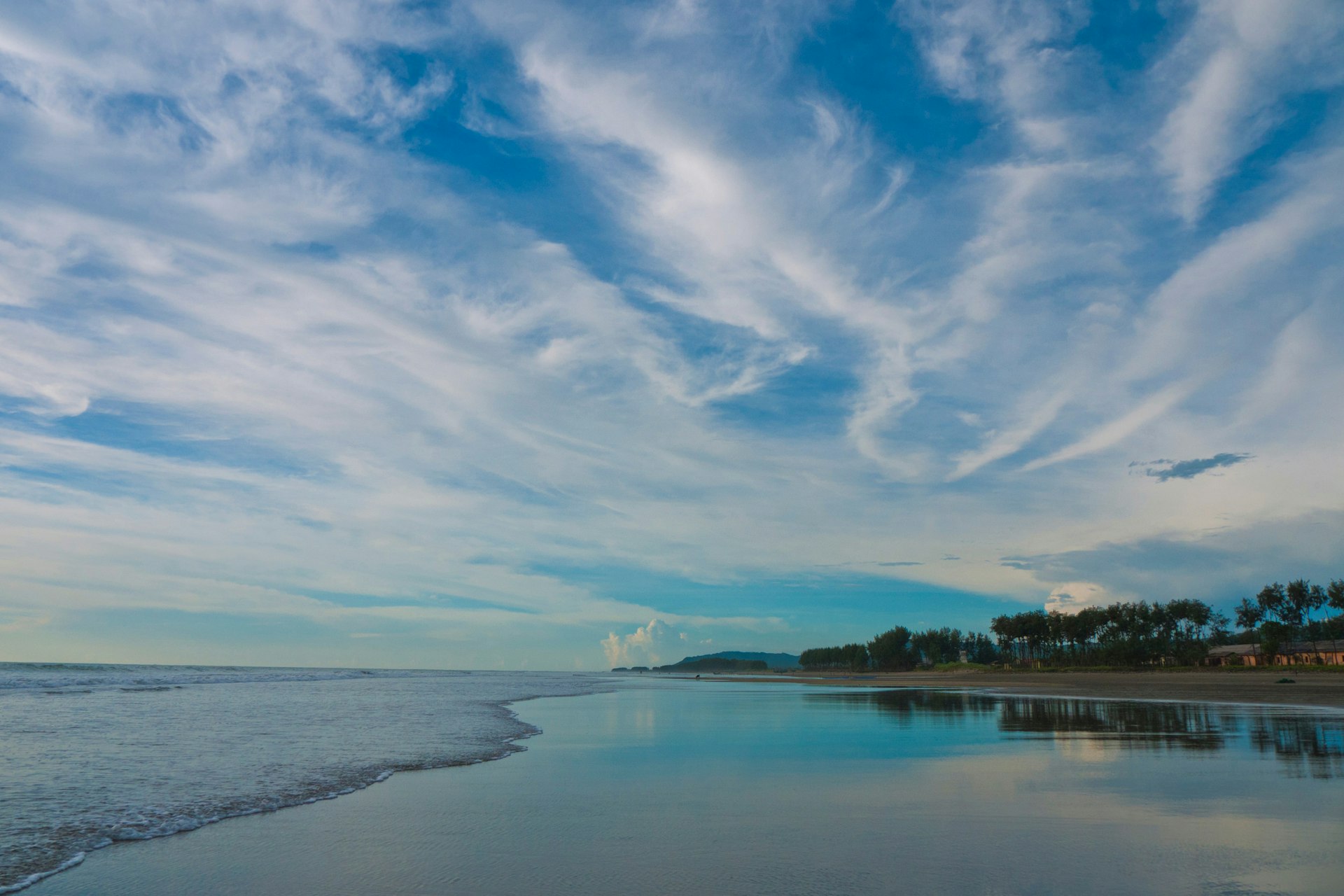Bangladesh Touring Spots
For those who like to explore a destination beyond the must-see highlights, Bangladesh offers rich pickings. Even the most famous sites in this waterlogged country are rarely crowded with tourists, and at outlying ruins, historic sites and beauty spots, you may feel like you have the entire place to yourself.
By all means start your trip with the obvious crowd-pleasers – tiger trips in the Sundarbans, riding the Rocket paddleboats, touring tea plantations – but also consider the following hidden gems to get your adventure juices flowing.

Muktagacha Rajbari
One of several rajbaris (family mansions of erstwhile feudal gentry) that are quietly crumbling into oblivion in towns and villages across Bangladesh, the Muktagacha Rajbari exemplifies what every ruin should be like. Splendid in decay, the main palace sits in the heart of a 10-acre estate, its grandiose exteriors adorned with massive Corinthian columns, high parapets and floral stucco work. There’s no fancy reconstruction or meticulous renovation going on here; instead, you just have a classic Ozymandian case of human endeavour being slowly reclaimed by the surrounding vegetation. The enthusiastic caretaker of the estate, who speaks a little English, brings the whole place to life in return for a small tip from the handful of tourists who make it this far.
Getting there: Take a bus from Mymensingh to Muktagacha, and then simply follow the signs leading to the rajbari from the main road. Passing locals will be quite happy to lead you down the right path if you happen to lose your way.

China Clay Hills
Journeying to this spot of tranquillity is really half the fun of the trip. Located close to the Indian border, on the other end of a delightful three-hour boat ride along the quiet Someshwari River, these ‘hills’ are a series of small but picturesque mounds that rise above the river system and surrounding farmlands, and enclose a serene lake with clear turquoise water. It’s a fabulous spot for a tree-shaded picnic and some nature photography, particularly in the late afternoon. On your way back, you could opt for a rickshaw ride and pass through a number of remote tribal villages along the way.
Getting there: Take a bus from Mymensingh to Birisiri, where you’ll need to stay the night. Your best overnighting options are the YMCA or the YWCA, both of which can arrange a boat for you. Otherwise, simply head out onto the main road and tell a rickshaw rider you want to go to ‘cheena matir pahar’.

Maheskhali Island
With its rustic atmosphere and collection of Hindu and Buddhist temples, the island of Maheskhali makes a wonderfully peaceful escape from the brashness of Cox’s Bazar’s resorts. Negotiate a long and rickety wooden jetty winding its way over marshlands to the boat dock, and then hop onto a nippy little speedboat ferrying locals across to the island. You’ll navigate past some scenic mangroves along the way, with your boat bobbing in the wash of other passing vessels. On the island you’ll get a chance to visit a few salt pans, rural markets and units for processing sundried fish, all of which contribute to the local economy.
Getting there: The journey from the jetty to Maheskhali takes about 30 minutes. Upon arriving at the island, you can hire an auto-rickshaw for about Tk500 to show you the sights over the next few hours.

Goaldi Mosque
One of Bangladesh’s oldest surviving mosques, Goaldi Mosque is hidden away amongst farmlands surrounding Painam Nagar (more commonly referred to as Sonargaon), a small abandoned town close to Dhaka where you can also find the crumbling remains of dozens of 19th-century mansions once owned by wealthy Hindu families. The mosque too has been abandoned, and is no longer a place of worship, but it makes a worthwhile side trip if you’re visiting Painam Nagar, and is a great excuse to venture off the beaten track and into the countryside without having to stray too far from Dhaka.
Getting there: Buses regularly shuttle between Dhaka and Painam Nagar. Walk out of the settlement, turn left and then follow the road as it leads out of town and into the paddies. For directions from here, approach any local and ask for ‘Goaldi Masjid’.

Teknaf Wildlife Sanctuary
It’s not just tigers that hide in the forests of Bangladesh. There are wild elephants here too (albeit only a few), and one of the nicest places to go looking for them is this little-known game reserve, which stretches down to Bangladesh’s furthest southern tip. Your chances of spotting an elephant are slim (evenings are best, when they step out of the jungle and head to water bodies for a drink and a wash). However, hiking into the hilly forest here is an adventure in itself. Along the way you may come across villagers who venture into the hills to collect firewood. The trails are marked on wooden signboards (in Bengali only), so it’s reasonably easy to find your way around. Teknaf is bound to the west by the Bay of Bengal, so there are some impressive, lonely beaches too.
Getting there: Take a Teknaf-bound bus from Cox’s Bazar. Get off when you see the sign with the elephant on the side of the road, about 8km before Teknaf. If you’re keen on elephant-spotting in the evening, staying the night is possible at Hotel Ne-Taung in Teknaf, which you can reach by shared auto-rickshaw from the reserve.

Floating markets at Banaripara
Like the more famous floating markets in southeast Asia, the small floating market at Banaripara is where locals in this river-laden part of Bangladesh come to buy and sell groceries without ever having to step off their boats. This particular market deals almost entirely in rice, and makes a fascinating and unusual side trip from Barisal as part of a foray into southern Bangladesh. Saturday (locally also called ‘haat’ or market day) is the busiest here, when the river is full of bobbing shops and the stalls in the narrow lanes leading down to the river are at their most colourful. Barisal has its own floating market, specialising in fruit and vegetables.
Getting there: Take a bus from Barisal to Banaripara, and then stroll down to the riverside. After spending the day there you can return to Barisal for the night and stay at Hotel Athena International or Hotel Sedona International.

Sangu River
Given that Bangladesh offers boat rides in innumerable permutations, the stretch of the Sangu River that runs between Ruma Bazaar and Bandarban is particularly special for two reasons. One, the scenery here is stunning: this is the Chittagong Hill Tracts where you’ll find dramatic rock faces rising up from the water’s edge, backed by forested hills teeming with wildlife. The second reason is that it’s tougher to get to than the average Bangladesh river, since political and communal tensions mean that foreigners need permits (and sometimes armed guards) to visit the area. Nonetheless, the boat ride along the lazy river is magical, as you pass villages only accessible by boat and enjoy some mesmerising rural scenery along the way.
Getting there: Take a bus from Bandarban to either Ruma Bazaar or Khokhongjiri (a riverside jeep stand situated an hour before Ruma), then find a local boatman to take you back to Bandarban by river (four hours from Khokhongjiri, six hours from Ruma). Your chances of getting a boat will increase if you have a local guide with you. The excellent Hillside Resort in Bandarban can arrange guides and ‘reserve’ boats for private journeys, as opposed to ‘service boats’ that ply the route daily.

Kantanagar Temple
One of Bangladesh’s few surviving terracotta temples from the 18th century, this utterly beautiful shrine dedicated to the Hindu Lord Krishna stands amid a vast windswept openness near the northern town of Kantanagar near Dinajpur. It’s a supremely surreal landscape, and aside from the stray cowherd passing by with his livestock, you’ll see few other humans around, which makes it doubly ethereal. The burnt clay panels on the temple’s exterior are intricately detailed and make for some fantastic photo ops. If you visit during the Hindu festival of Maha Raas Leela in late November or early December, you can attend a lively rural fair that takes place around the temple complex.
Getting there: Buses run all day from the town of Dinajpur to Kantanagar village, from where it’s a lovely 10-minute walk through lush farmlands and mud-hut hamlets. You can also hire an auto-rickshaw for a return trip to the temple from Dinajpur.



